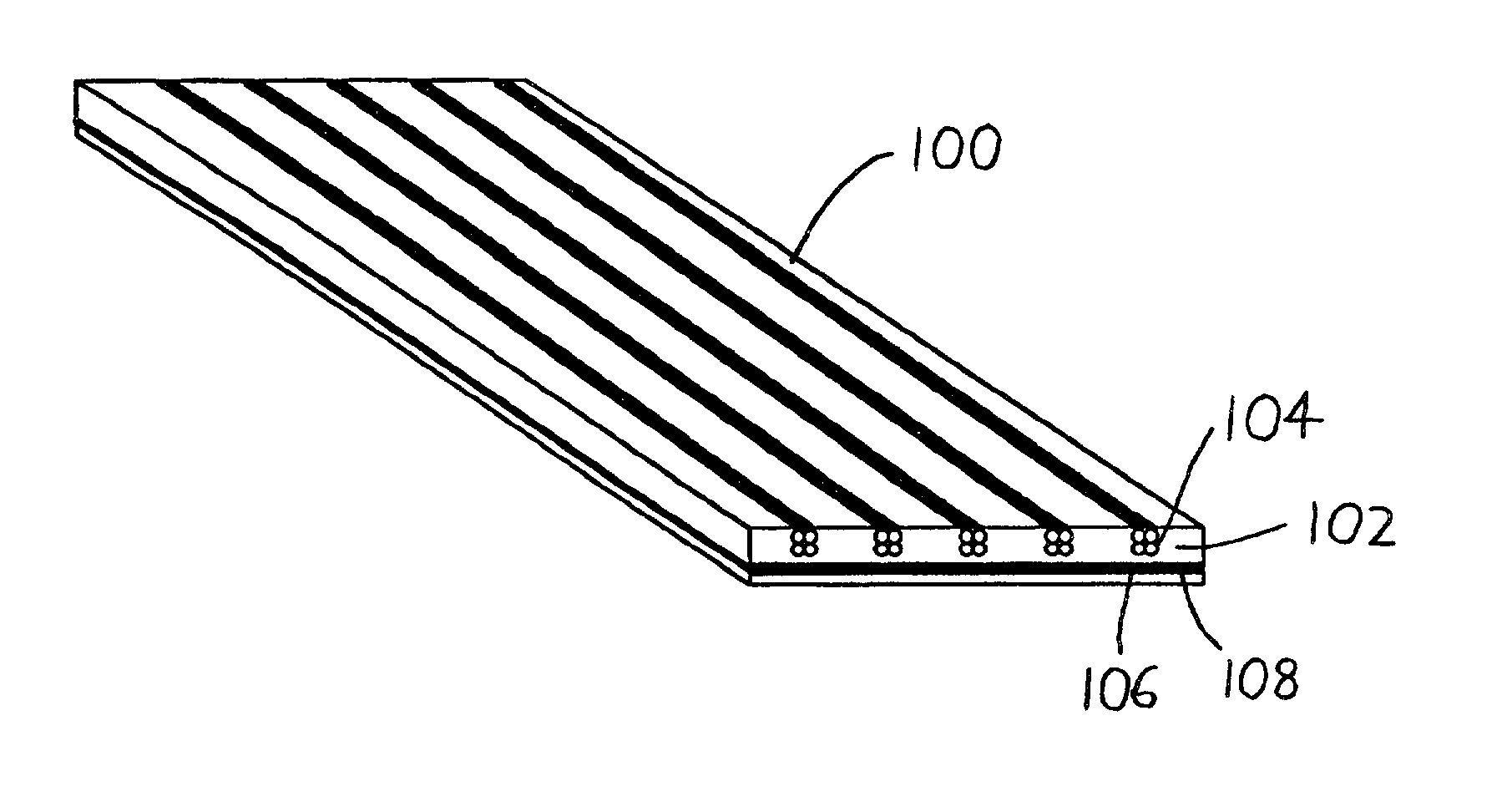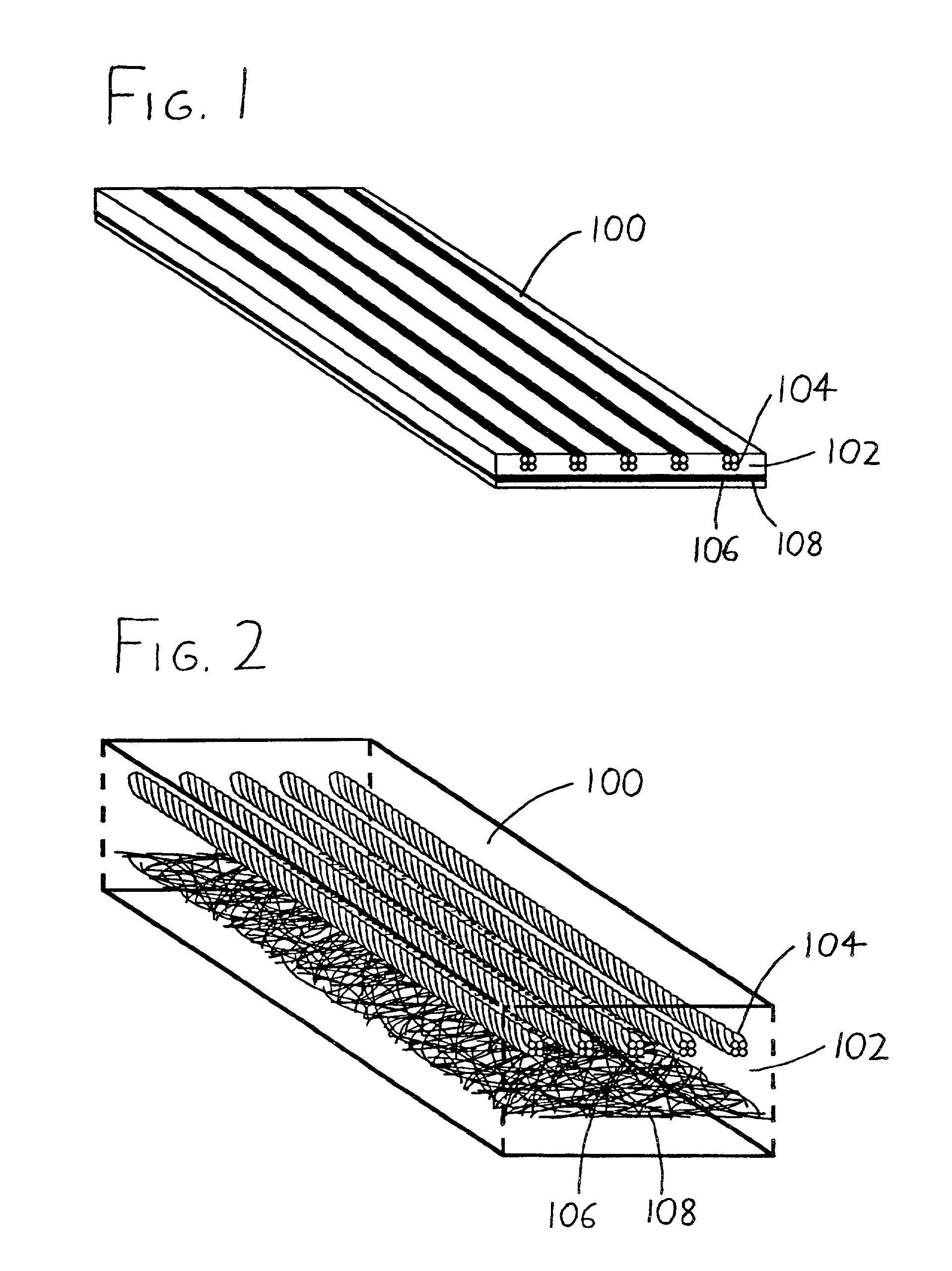Structural reinforcement using composite strips
a composite strip and structural reinforcement technology, applied in the field of structural reinforcement strips, can solve the problems of time-consuming methods, system preparation and curing, and adhesives that cannot reach the design strength, and achieve the effects of reducing potential damage to the underlying structure, easy to carry by a single person, and easy cutting
- Summary
- Abstract
- Description
- Claims
- Application Information
AI Technical Summary
Benefits of technology
Problems solved by technology
Method used
Image
Examples
Embodiment Construction
[0022] Referring to FIGS. 1 and 2, an exemplary preferred composite reinforcing strip 100 is illustrated. The strip 100, which is preferably continuously formed via pultrusion, includes a polymer matrix 102 having embedded fibers of two types. Initially, elongated continuous strand fibers 104, which are fed from reels during the pultrusion process, are provided with their lengths extending along the length of the strip 100, with the fibers 104 being transversely arrayed with their axes parallel to each other and to the axis of the strip 100. While the fibers 104 could be closely arrayed side by side with small spacings between the fibers 104 (e.g., with fiber spacings being some distance between 0-5.times. the fiber diameters), they are preferably provided with discrete spacings which are sufficiently large that a fastener (as discussed later in this document) can be accommodated between adjacent fibers if desired. More preferably, the fibers 104 are provided in bundles or rovings o...
PUM
| Property | Measurement | Unit |
|---|---|---|
| diameter | aaaaa | aaaaa |
| thick | aaaaa | aaaaa |
| thick | aaaaa | aaaaa |
Abstract
Description
Claims
Application Information
 Login to View More
Login to View More - R&D
- Intellectual Property
- Life Sciences
- Materials
- Tech Scout
- Unparalleled Data Quality
- Higher Quality Content
- 60% Fewer Hallucinations
Browse by: Latest US Patents, China's latest patents, Technical Efficacy Thesaurus, Application Domain, Technology Topic, Popular Technical Reports.
© 2025 PatSnap. All rights reserved.Legal|Privacy policy|Modern Slavery Act Transparency Statement|Sitemap|About US| Contact US: help@patsnap.com



